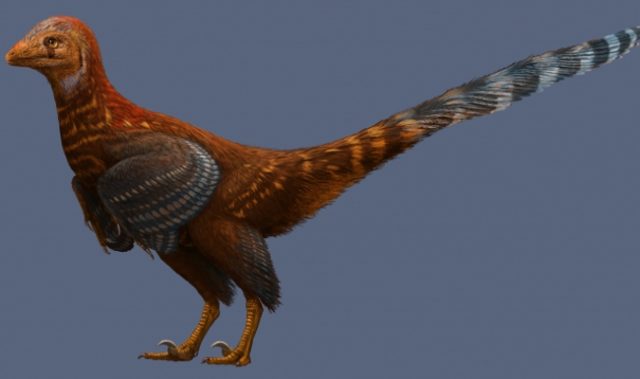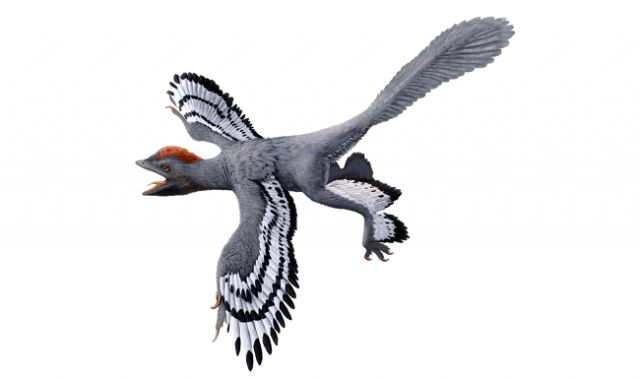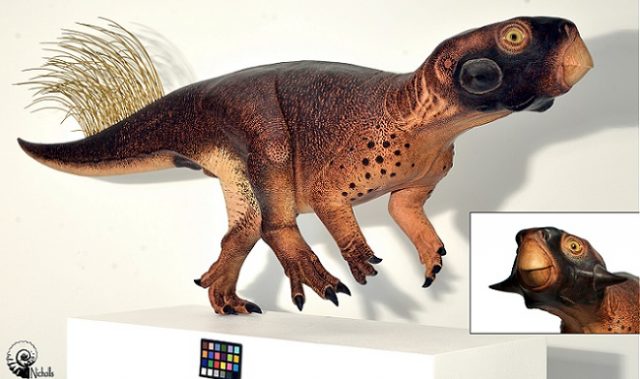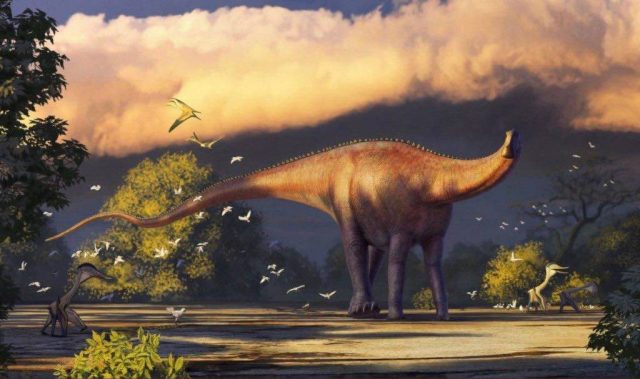
AsianScientist (Jun. 2, 2015) – In a paper published in PLOS ONE, researchers describe a simple technique for analyzing fossils—laser-stimulated fluorescence (LSF).
“Laser fluorescence opens the door to discovering previously unseen and unknown features in ancient fossils,” said Mr. Thomas Kaye, the study’s lead author and paleontology research associate at the Burke Museum of Natural History and Culture.
Each color of laser emits a different wavelength of light, which excites the minerals that make up a fossil in different ways. LSF can be pinpointed onto microscopic fossils as well as projected over large areas to analyze bigger specimens.
The research team applied this new technique to five different case studies in the PLOS ONE paper. One study involved fossilized feathers from the Green River Formation in western Wyoming. These feathers provide unusual insight into soft tissues preserved in the fossil record. When observed under standard lighting, barbs on the feathers are apparent but the interlocking barbules were missing.
However, when back-lighting the fossils using the LSF technique, the much smaller barbules become visible and were found to be widely distributed on the specimens. Multiple specimens from the same time and place showed these results.
In addition to the fossilized feathers, the research team found that the LSF technique can identify specimens underneath the rock matrix the fossil is buried, help automate and speed up the sorting of micro-fossils from gravel, be used in the field to analyze fossils that can’t be removed from the landscape and even identify possible faked or doctored “two-faced” fossils. For the latter case study, the research team used a fossil of the gliding dinosaur Microraptor, a species of carnivorous dinosaur which are the animals that Pittman’s research focuses on.
The ability to look for hidden specimens in a fossil’s rock matrix used to be only possible using X-rays, CT scans and other high-cost imaging methods. With LSF, researchers can set up a basic station quickly and for around HK$4,000 (US$515). LSF provides an instantaneous, non-invasive, geochemical fingerprint of fossilized bone, soft tissue, integument (protective layers like skin and plant cuticles) and the surrounding rock matrix.
“LSF promises to become an important mainstream paleontological technique, so the team and I really hope that it fulfills its billing and helps to drive the field further forward,” added Dr. Michael Pittman, research assistant professor and head of the Department of Earth Science’s Vertebrate Palaeontology Laboratory at the University of Hong Kong.
The article can be found at: Kaye et al. (2015) Laser-Stimulated Fluorescence In Paleontology.
———
Source: The University of Hong Kong.
Disclaimer: This article does not necessarily reflect the views of AsianScientist or its staff.












